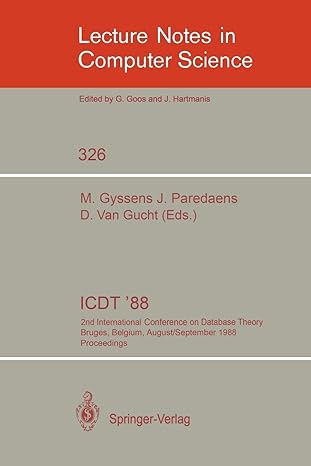Question
Part 2: Generating Secure, Memorable Passwords One big reason why people choose weak passwords that are easily cracked is because they have been taught that
Part 2: Generating Secure, Memorable Passwords
One big reason why people choose weak passwords that are easily cracked is because they have been taught that only confusing passwords are secure. People either reject this advice and leave themselves vulnerable, or adopt password creation heuristics that are not resilient to cracking in practice (e.g. English word plus one capital letter, one random number, and one random symbol).
In this part of the project, you will write a program that generates secure, memorable passwords using the XKCD method. Your program may be written in any language that is available on the CCIS Linux machines (this includes C, C++, Python 2 and 3, Java, Racket, Ruby, Perl, Go, Rust, and possibly others). Regardless of which language you choose, your program must exactly obey the following command line syntax:
$ ./xkcdpwgen -h usage: xkcdpwgen [-h] [-w WORDS] [-c CAPS] [-n NUMBERS] [-s SYMBOLS] Generate a secure, memorable password using the XKCD method optional arguments: -h, --help show this help message and exit -w WORDS, --words WORDS include WORDS words in the password (default=4) -c CAPS, --caps CAPS capitalize the first letter of CAPS random words (default=0) -n NUMBERS, --numbers NUMBERS insert NUMBERS random numbers in the password (default=0) -s SYMBOLS, --symbols SYMBOLS insert SYMBOLS random symbols in the password (default=0)
Note that your program does not need to print this exact help text. However:
Your program must support all five of these command line options.
Your program must be named xkcdpwgen.
Packaging Your Submission for Part 2
Because you are allowed to program in whatever language you wish, we require that all students submit a Makefile. If you choose to use a compiled language, you must turn in your source code, and the Makefile must compile your program. For example, if you write your program in C/C++, the final product of the Makefile should be a program called xkcdpwgen.
If you choose to program in a compiled language that does not produce executable binaries (e.g. the Java compiler produces .class files), then you must include a shell script with your submission named xkcdpwgen that can (1) invoke your program and (2) forward any given command line arguments to your program.
If you choose to use a language that does not need compilation (e.g. Python, Perl), you may leave your Makefile blank. We encourage students that choose to program in scripting languages to adopt shebang syntax and submit an executable script named xkcdpwgen.
Step by Step Solution
There are 3 Steps involved in it
Step: 1

Get Instant Access to Expert-Tailored Solutions
See step-by-step solutions with expert insights and AI powered tools for academic success
Step: 2

Step: 3

Ace Your Homework with AI
Get the answers you need in no time with our AI-driven, step-by-step assistance
Get Started


